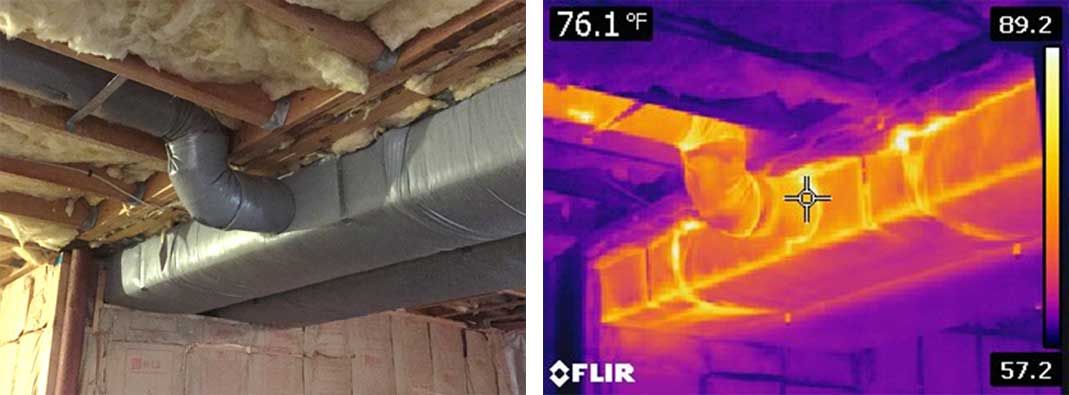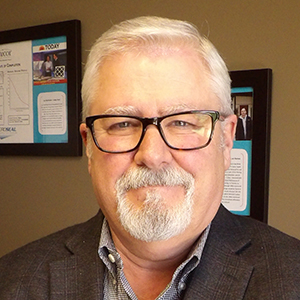3 Types of Duct Leakage That Impact HVAC Performance

Leaks threaten the effectiveness of every heating and cooling system. But did you know there are different types of duct leakage? Understanding the three distinct types of leakage is key to understanding how they impact HVAC system performance.
- Leaks Outside the Thermal Envelope: These leaks allow outdoor air into the return or supply ductwork, making it easy for dust particles and other contaminants to enter the home.
- Leaks Inside the Thermal Envelope: These leaks are also found in the return or supply ductwork and lead to inefficient air handling that creates hot and cold zones in the home.
- HVAC Equipment Leaks: Depending on where the equipment is located, these leaks can be inside or outside the thermal envelope. This can make the equipment work harder than needed to keep the home at a comfortable temperature.
Each type of duct leakage can cause varying comfort, indoor air quality, and efficiency issues in homes. As a result, duct leakage is an often-overlooked contributor to callbacks from your customers.
Return/Supply Duct Leakage to Outside the Thermal Envelope
When supply duct leak to the outside, the duct loses conditioned air intended for the home to an attic, crawlspace, or garage. This air hinders BTUs from reaching the intended spaces in a home.
In addition, the house will be under negative static pressure. And since lost air must be compensated for through all the holes in a home, air full of dust, pollen and other contaminates gets into the home.
Return duct leakage pressurizes the home but depressurizes the space it draws from, bringing in air that can foul the coil, fan blower and any filter in line. Heat and cold air will be introduced to the home with this leak, plus dry air in the winter and wet, humid air in the summer.
Return/Supply Duct Leakage Inside the Thermal Envelope
When supply ducts leak inside the thermal envelope, it can lead to air balancing issues in homes. Essentially, the BTUs generated by the equipment are not getting delivered to the desired rooms. This leads to hot and cold spots.
A good example is a two-story home with a basement in the Summertime. The second floor is very hot, the first floor is comfortable, and the basement very cold. Instead of the air staying in the ductwork, it’s leaking into the thermal envelope following the laws of thermodynamics (hot air rises, cold air sinks).
Return duct leakage inside the thermal envelope can result in sweating of ducts or back-drafting of gas appliances. When ducts sweat, mold can grow, which everyone knows is bad. When appliances back-draft, volatile organic compounds (VOCs) can populate. And like mold, VOCs are not good for indoor air quality.
HVAC Equipment Leakage
If you did a leakage test on most any piece of HVAC equipment, you would find a significant amount of leakage in the case. If the equipment is outside the house — such as a crawlspace, garage or attic — then conditioned air is being lost and outside air is being introduced into the home. Depending on how much and where the equipment leaks, it can lead to issues very similar to duct leakage.
Regardless of the type of leak, they all must be repaired. But if the primary focus is on energy savings, leaks outside the thermal envelope should be your top priority. And knowing the different types of leaks will ensure you diagnose heating and cooling issues properly.
Contributor
 Ken Summers
Ken SummersVice President of Training, Aeroseal
Call: 360.201.1467
Email: ken.summers@aeroseal.com
Connect on LinkedIn
About Ken Summers
Ken Summers has more than 30 years of experience in the HVAC industry. Starting in 1980, he did residential service, in-home sales, and commercial design/build. In 1995, he joined Retrotec, a manufacturer of test instruments used in performance contracting such as blower doors and duct air tightness testers, where he trained contractors how to use test instruments to understand better on how houses worked from a comfort and indoor air quality (IAQ) basis. In 1998, he co-founded Comfort Institute (CI), a leading home performance training organization. For the past 20+ years, he has been with CI helping progressive HVAC contractors adopt whole-house and air distribution system diagnostics and repair. In 2014, CI joined Aeroseal where Ken is the Vice President of Training. Ken specializes in helping contractors avoid common issues related to HVAC load calculation and duct design mistakes, duct leakage problems, thermal envelope repair, and mold related issues across the country. He has spoken at many industry leading events including ACCA, PHCC, RSES, EPA, EGI as well as being brought in to speak with local utility and code officials across the country about how the house works as an interactive system.
